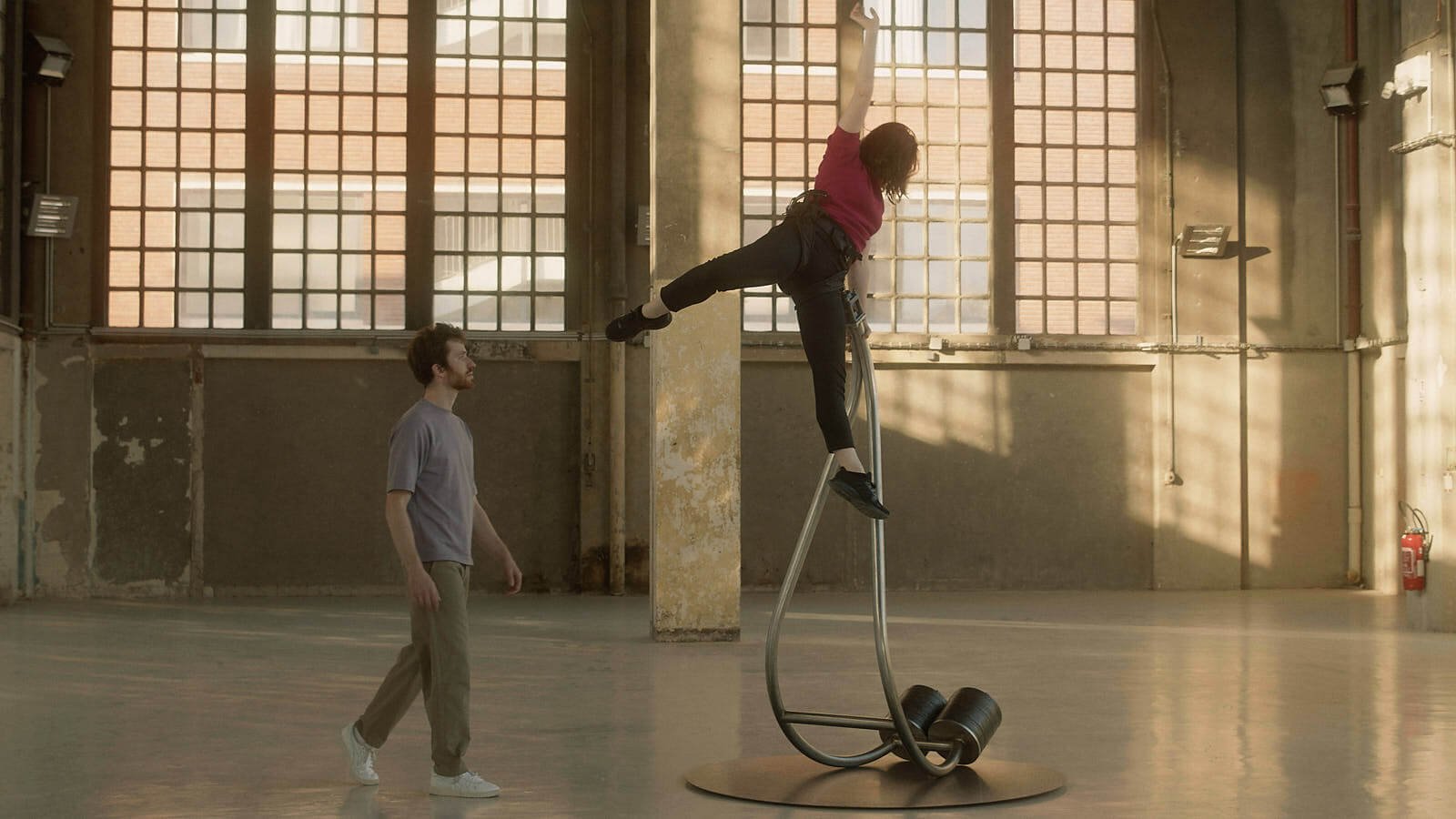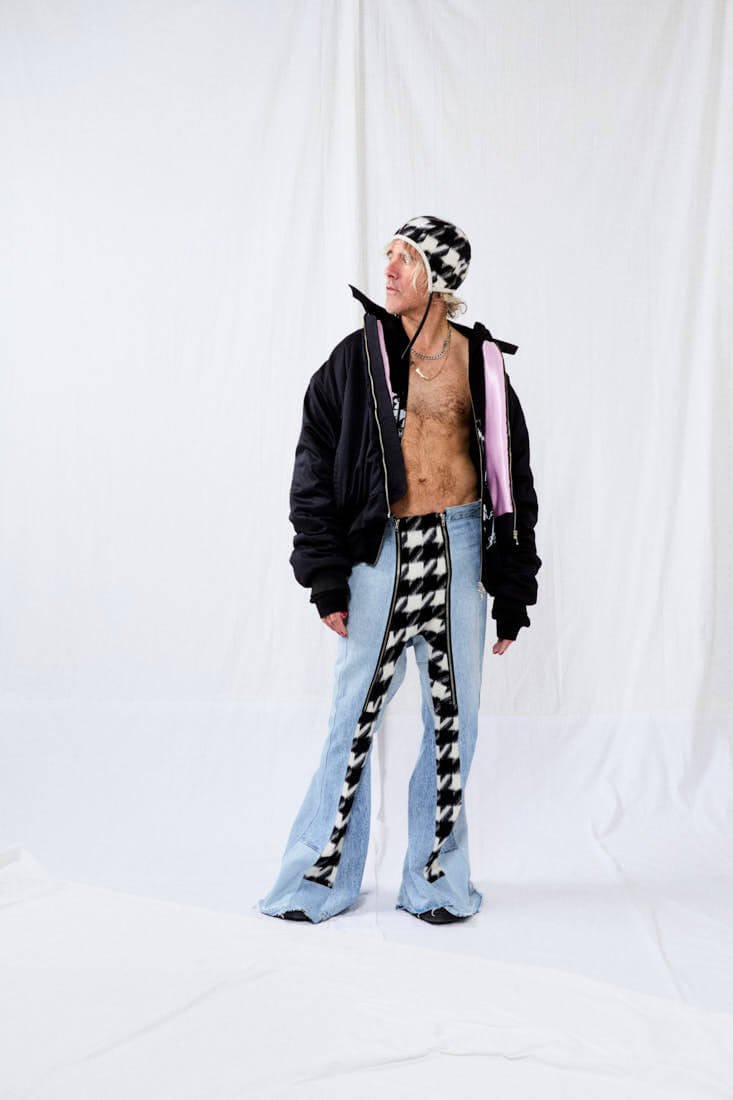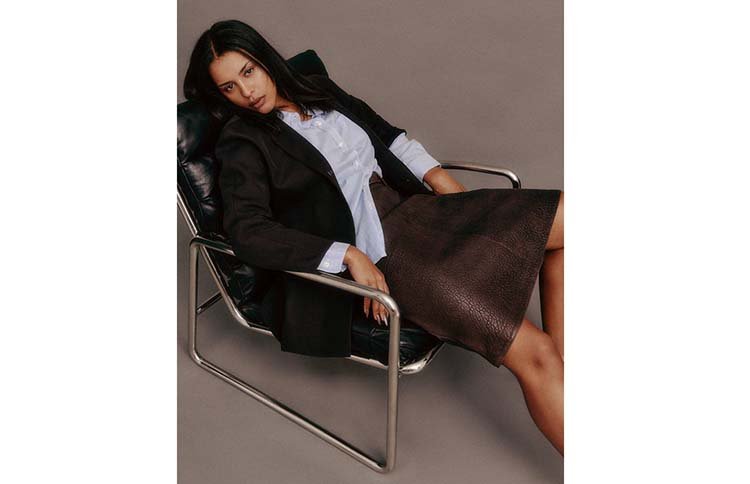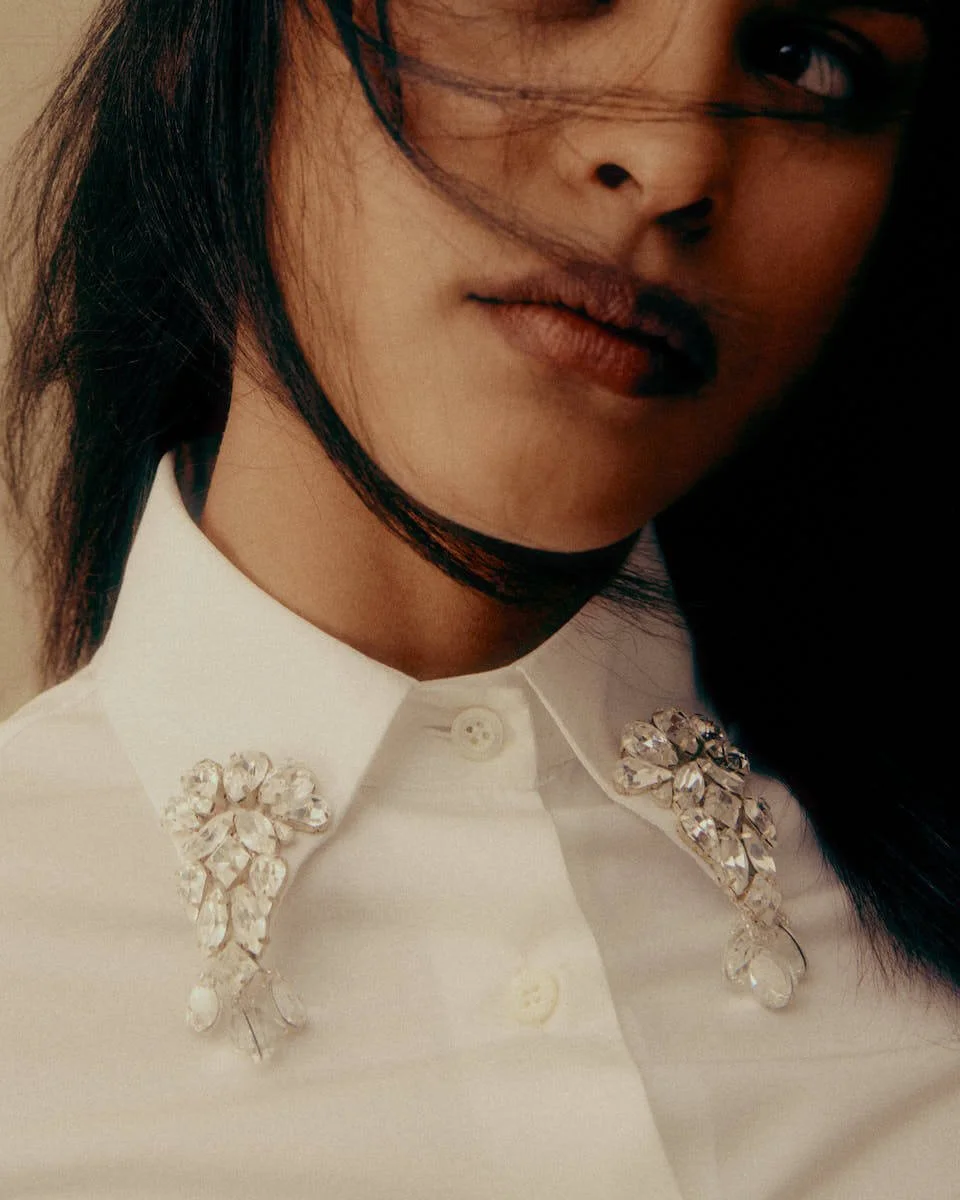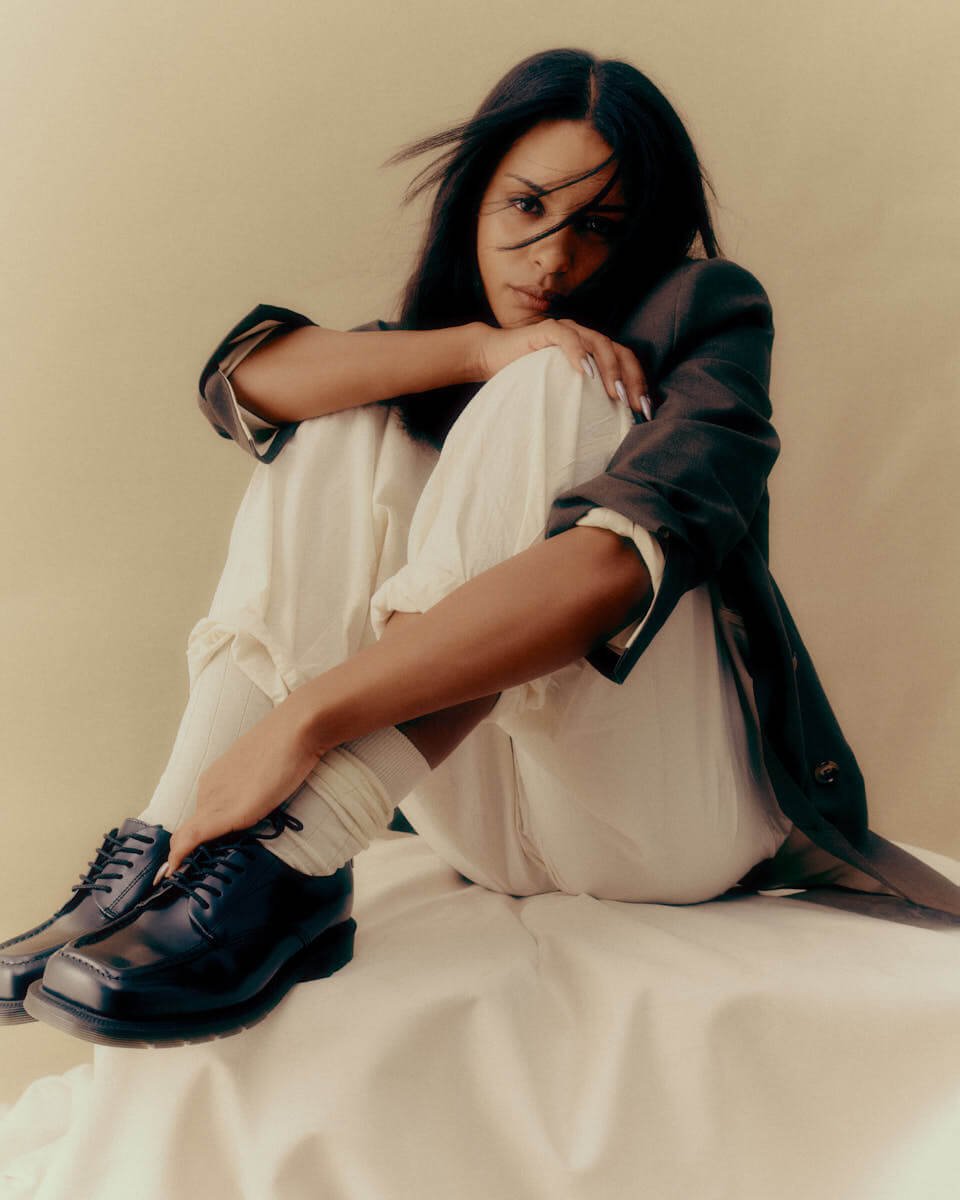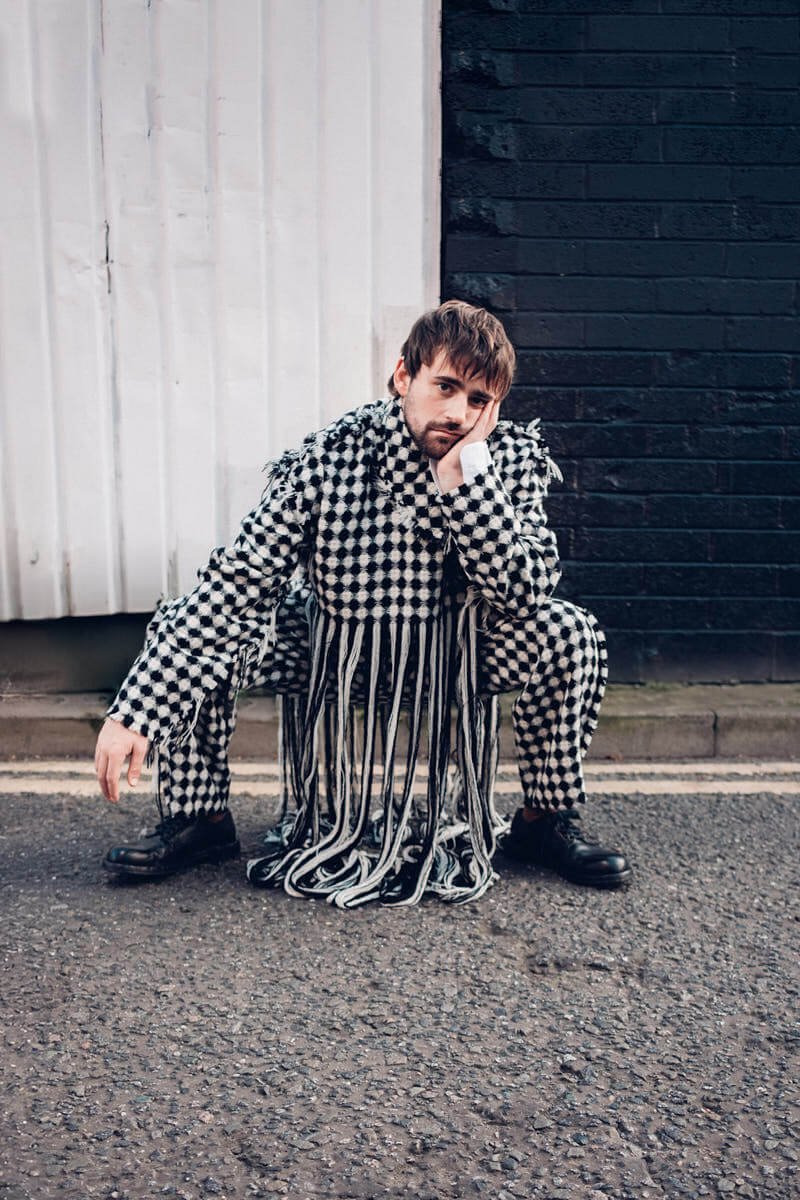.aesthetic talk
BULLYACHE
*Grit and Glamour
written + interview ALBAN E. SMAJLI
BULLYACHE crafts a visceral blend of working-class grit and queer defiance, a raw reflection of the world’s chaotic pulse.
Emerging from the intensity of sobriety and the tight-knit bond of collaboration, their art fuses mythology with the stark realities of contemporary life. Each performance is a live confrontation with anxiety, absurdity, and the relentless push to create meaning in a fractured world. Disrupting traditional spaces and narratives, BULLYACHE redefines what it means to connect through art, turning instinct into a powerful force that challenges and captivates.
Bullyache
seen by Will Hazel at Abbey Road Studios
“We make performance works in a world on fire, which feels a little absurd, but maybe that reflects a general dissociation and anxiety that's going on.”
Bullyache speak with Alban E. Smajli
for LE MILE Issue N3. 37 - AGE OF CHANGE
(c) Will Hazel
(c) Will Hazel
Alban E. Smajli
BULLYACHE has been described as a pop-culture collision of working-class and queer expression. How does your art reflect the changing dynamics of society, particularly in terms of class and identity?
Bullyache
It reflects it in that we have elevator pitches like this that generalize who we are and make massive claims about what we do. Which isn’t all bad, it's a double-edged sword. There's more of an immediate relationship with someone who hears about the work but at the cost of subtlety and complexity.
We reflect a tiny subcategory of people, but we’re at least trying to do that in a way that feels good for us and the people we work with. If we’re good at that, then maybe it can reach out to wider groups of people. We make performance works in a world on fire, which feels a little absurd, but maybe that reflects a general dissociation and anxiety that's going on. Our end goal is that the work has a relationship to the viewer that blurs boundaries of feeling and definition. It's probably that act of blurring and anxiety that's most reflective.
Your work merges mythology with contemporary socio-political themes. In today's era of rapid change, how do you balance the preservation of cultural narratives with the need to innovate and disrupt?
We don't really care about any sort of preservation. I don't think it’s in our head to disrupt either. We’re trying to get at a feeling we have personally and we use what comes to us to get at that. Mythology can be tragic or kitsch or camp. It’s however the audience feels about it. Most disruption comes from failure.
BULLYACHE started during the pandemic as a manifestation of your friendship and sobriety. Can you share how these personal experiences influenced the birth of your artistic vision?
We couldn't do anything, then we got sober and filled the void with work, co-dependence with each other, and narrowing the vision we have. We spend every day together so we never really have to talk about what the vision is; it's a felt thing.
Your style has been likened to 'Pina Bausch cosplaying as Dua Lipa in Cradle of Filth makeup.' Can you tell us how these diverse influences shape your creative process and stage aesthetics?
We steal, take, reuse, resample, remake, reform until it becomes ours. We take inspiration from everything and nothing. It’s how to interpret our lives with the resources we have available, and ultimately everything just becomes a really practical decision. It's a gut instinct in response to what’s around us.
Congrats on being the first act to bring dance to Abbey Road since Kate Bush. How did it feel to perform in such an iconic space?
It’s a great space and a great team. They were fantastic and the skill level and resource was wild, but we don’t really put too much weight on legacy institutions. It’s incredible, all the people who have been there before, and it’s amazing to join that roster of artists so early on.
We got some homophobic comments on socials from that shoot which we didn’t expect, which was fun. Inviting all our collaborators to the space was super special.
Bullyache ́s performances are noted for their gazelle-like choreography and intense theatrics. How do you use movement and dance to enhance the storytelling aspect?
Movement and dance are the storytelling. You can communicate so much with a body by doing so little with it. If you create a narrative device for it, people will project their own images onto what they see.
Everyone can watch the same piece and have completely different takeaways, that's what we hope for. If there was an A to B thing we were getting at, we could put our energy into being on Twitter [now X].
How do you ensure that the stories of working-class and queer experiences are authentically represented and resonate with a broad audience?
We don’t know if they resonate or not. They should because they are ultimately about the attempts at success and failure that comes with being in the world. Hopefully, everyone can take something away from it.
If it doesn’t resonate, then that's fine. We’re also excited if people hate it. We know it’s not for them, and we’re doing something right. We’d rather concentrate on developing the channel of communication for who it does speak to.
Looking ahead, are there new themes or concepts you're ready to explore in the future?
Suicide and femcels, Luke Belmar, English cuckoldry.
(c) Will Hazel
“We steal, take, reuse, resample, remake, reform until it becomes ours.”
Bullyache speak with Alban E. Smajli
for LE MILE Issue N3. 37 - AGE OF CHANGE









